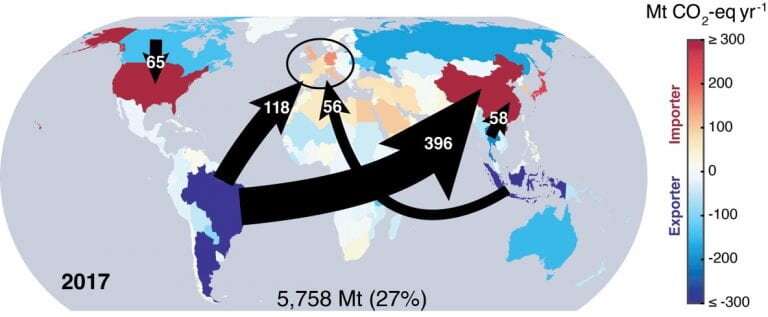
Earth system scientists at the University of California, Irvine and other institutions have drawn the clearest line yet connecting consumers of agricultural produce in wealthier countries in Asia, Europe and North America with a growth in greenhouse gas emissions in less developed nations.
In a paper published today in Science, the researchers report that trade in land-use emissions increased from a combination of agriculture and land-use change.
The scientists found that clearing of carbon-absorbing forests contributed to three-quarters of the amount of greenhouse gases driven by the global trade of agricultural goods.
Steven Davis said that a quarter of all human greenhouse gas emissions are from land use.
Brazil and Indonesia were the top sources of land-use- change emissions during the period studied.
According to the researchers, 22 percent of the world's crop and pastureland is used to cultivate products for overseas consumers. Rice, wheat, corn, soybeans, palm oil and other oil seeds occupy nearly one third of the land used for traded goods and contribute roughly half of traded greenhouse emissions.
In the early phase, China was a net exporter of agricultural goods, but by the end of the study, it was an importer of both goods and land-use emissions. Brazil's exports to Europe and the United States, which had been the nation's largest trading partners in 2004, declined.
Brazil was the largest source of export-related emissions in the last year, followed by Argentina, Indonesia, Thailand, Russia and Australia. China, the U.S., Japan, and Germany were the largest net importers of products tied to such emissions.
In addition to adding greenhouse gases to the atmosphere, human land use practices have caused a lot of damage to the environment.
The exports producing the highest amount of land use emissions are heavily dependent on export agriculture as a contributor to gross domestic product.
The study will raise awareness of the role of international trade in driving land-use emissions. Importer can adopt policies to reduce the most emissions-intensive imports and discourage regions from gaining an environmental trade advantage. Several regions, including Europe, the U.S., and China, have seen an increase in efforts to improve supply chain transparency in recent years.
Researchers from the University of California, San Diego, the University of California, Davis, the University of California, Tsinghua University, Beijing Normal University, the Chinese Academy of Sciences, and Ludwig-Maximilian University were involved in the project.
More information: Chaopeng Hong et al, Land-use emissions embodied in international trade, Science (2022). DOI: 10.1126/science.abj1572 Journal information: Science Citation: Emissions tied to the international trade of agricultural goods are rising (2022, May 6) retrieved 7 May 2022 from https://phys.org/news/2022-05-emissions-tied-international-agricultural-goods.html This document is subject to copyright. Apart from any fair dealing for the purpose of private study or research, no part may be reproduced without the written permission. The content is provided for information purposes only.